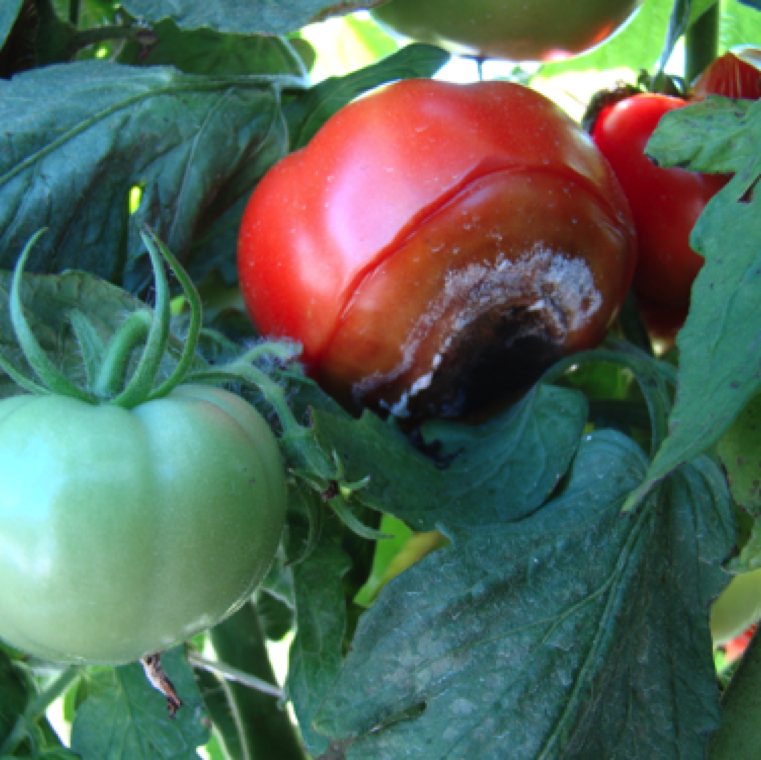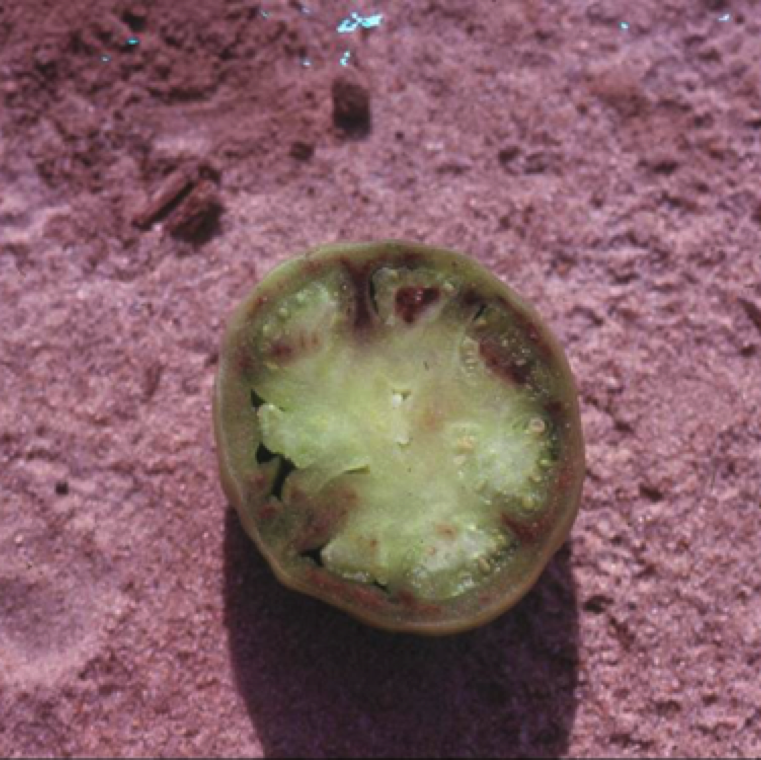

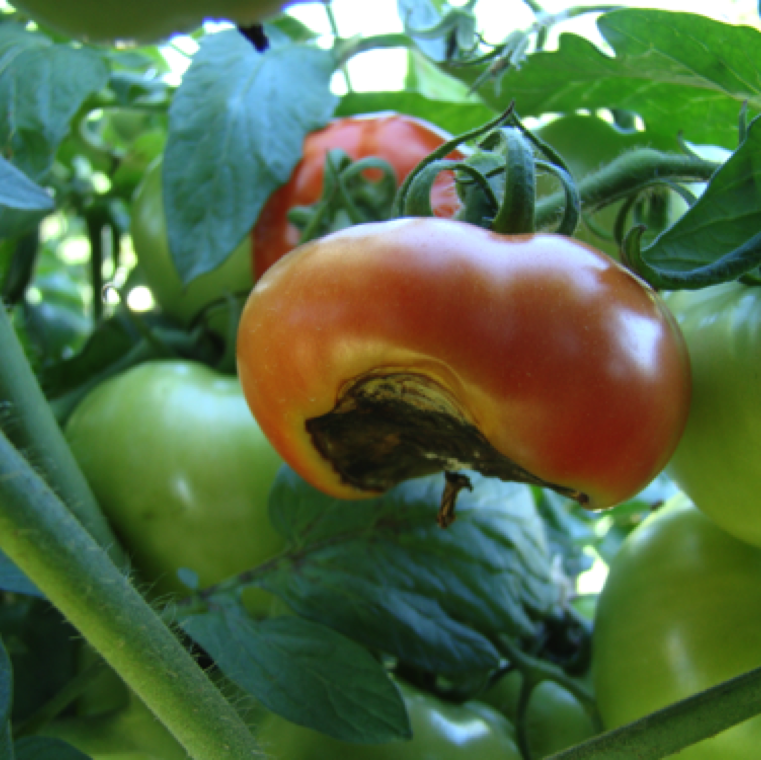
Blossom end rot is caused by a localized calcium deficiency in the developing fruit or situations by which calcium are not translocated effectively from the leaves to the fruit.
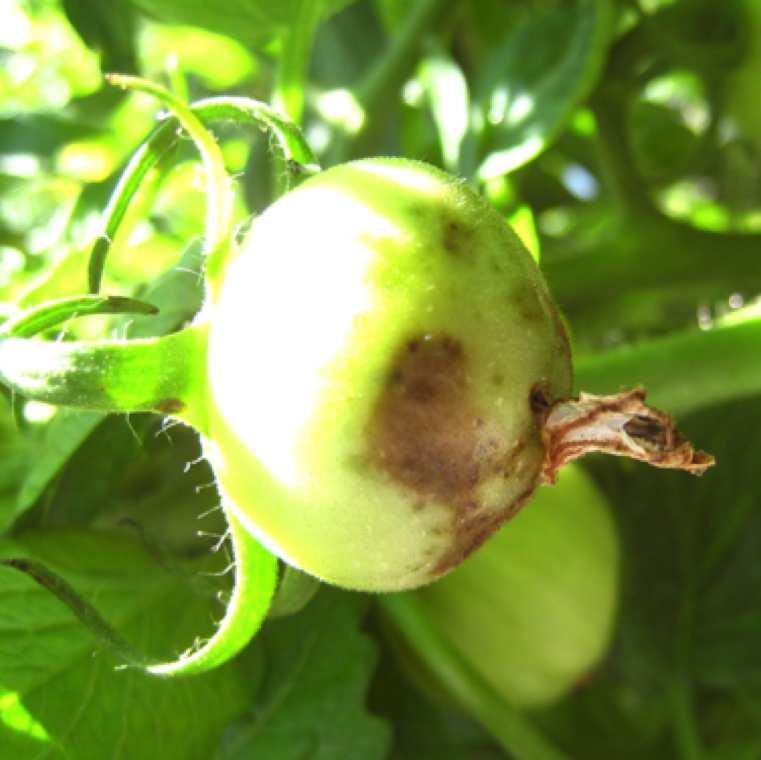
Light tan and water-soaked areas that can enlarge and turn black and leathery is characteristic to blossom end rot. Symptom occurs at the blossom end of the fruit, but sometimes occur on the side of the fruit.
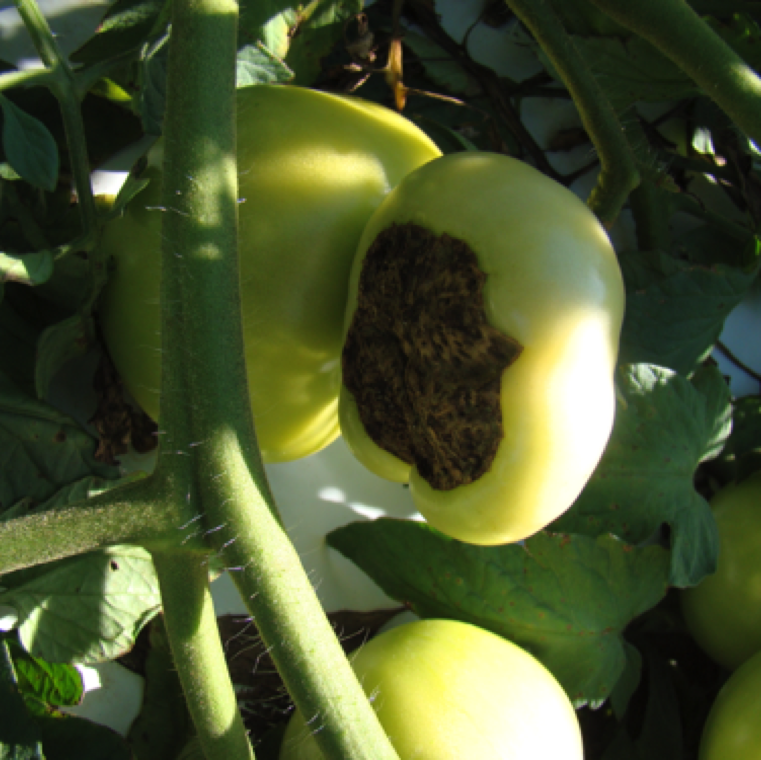
Low soil Ca, high nitrogen (N), use of ammoniacal N, high soluble potassium and magnesium in the soil, high salinity, low humidity, and inadequate/excess soil moisture could cause blossom end rot.
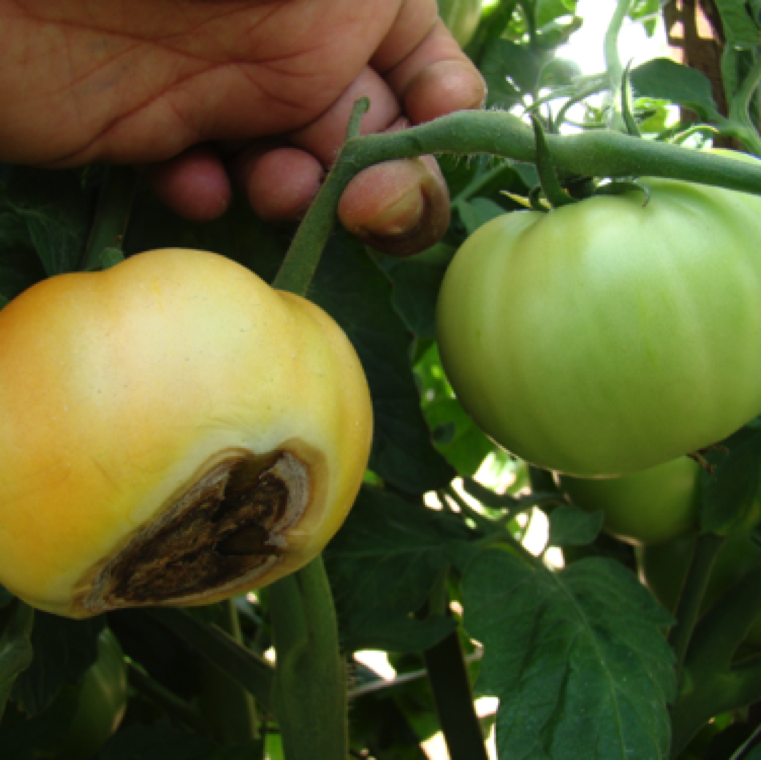
Damage to the root system by nematodes, diseases, mechanical means or heavy pruning of branches/suckers can also increase chances of blossom end rot.
BLOSSOM END ROT
Cause: Calcium deficiency/lack of translocation
Tomato diseases
